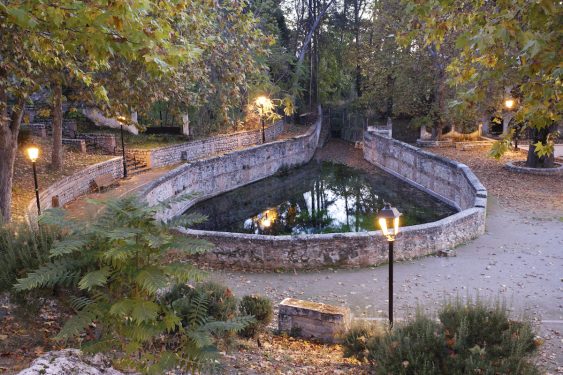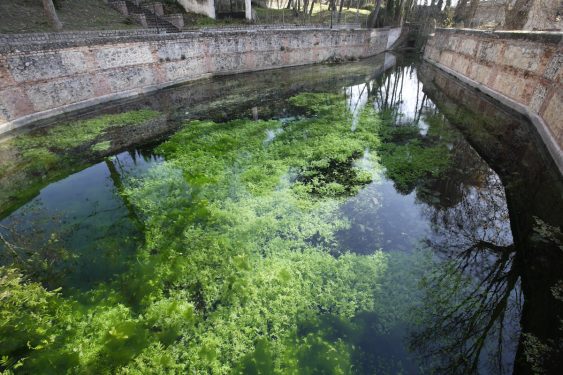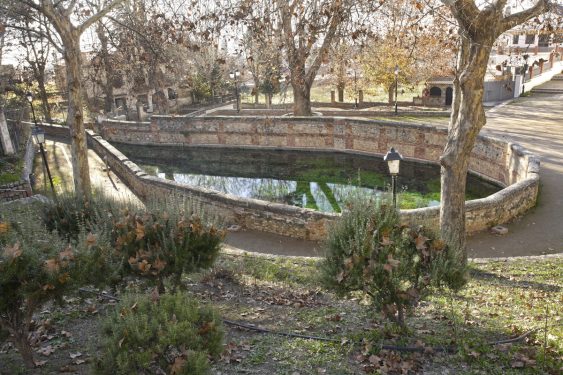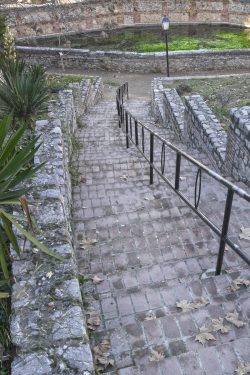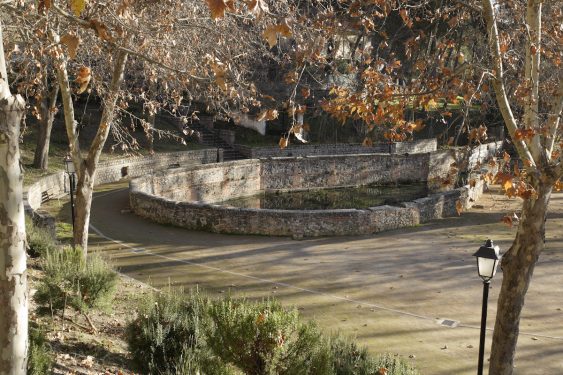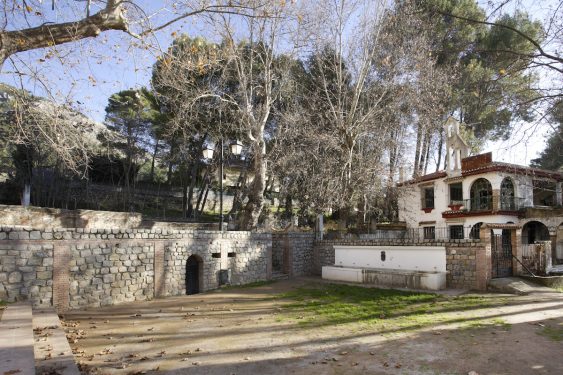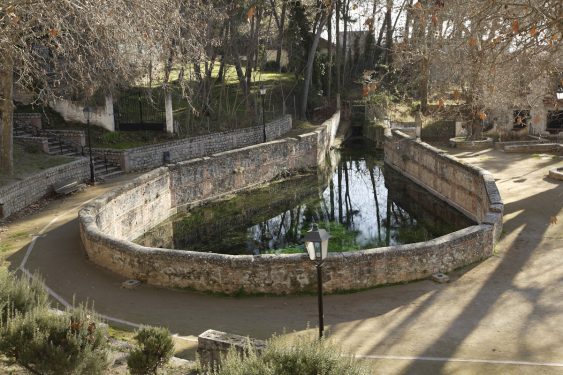Fuente Grande or Aynadamar is a fountain located in the upper part of Alfacar, next to the García Lorca park, where the poet was assassinated.
Fuente Grande, Fuente de las Lágrimas (Fountain of Tears) or Fuente de Aynadamar (Aynadamar Spring), according to Arabic terminology, is a fountain located in the upper part of Alfacar (Granada) about two hundred meters from the García Lorca Park, where the olive tree where the burial of the poet was erroneously located in 1979 by a commission of experts convened by the Diputación de Granada.
The fountain water emerges through small bubbles reminiscent of tears, and the fountain is lenticular, drop-shaped or even eye-shaped, which reinforces the association with weeping.
The constant presence of water in Lorca’s poetry, from his youthful poems included in Book of Poems to the posthumous Divan del Tamarit, to the washerwomen’s songs of Yerma, inspired by those sung by the women of Valderrubio at the fountains of La Teja and La Carrura, further amplify the metaphorical implications between the places of childhood and death.
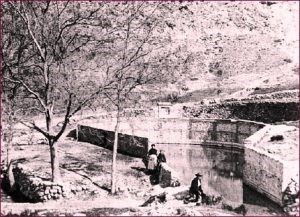
The Fuente de Aynadamar, in addition to its proximity to the site of executions during the Civil War and the post-war period, is symbolically linked to those dramatic months of repression for morphological reasons. The fountain water emerges through small bubbles reminiscent of tears, and the fountain is lenticular, drop-shaped or even eye-shaped, which reinforces the association with weeping.
In 1940, after traveling to Granada to learn directly about the circumstances of the death of his friend, Dámaso Alonso wrote a famous poem entitled The Big Fountain or the Fountain of Tears (Between Alfacar and Víznar) which definitively linked the allegorical link between the fountain and the execution of Lorca and hundreds of people of leftist ideology who were executed without trial in a strip of several kilometers between Aynadamar and the town of Víznar.
From a terminological point of view, the word Aynadamar comes from Arabic (ayn ad-damaʿa) and is composed of two words, ʿayn (‘eye’ and, by extension, ‘source’ or ‘fountain’) and damaʿa (tears), i.e. Ain Addamai. The water that emerges from the ground emanates from a turgidity of groundwater that comes from the so-called aquifer of the sierras of El Padul and La Peza, which covers a huge area, from the Natural Park of the Sierra de Huétor and Alfacar towards Cogollos Vega, Güéjar Sierra and Valle de Lecrín.
The original irrigation channel that channeled water from the fountain dates back to the Zirid Arab period before the eleventh century, although the hydraulic infrastructure was later renovated by the Andalusians around 1013. The route, which is still in use, is built with mortar walls and the flow, until relatively recently, reached the Albaycín, specifically to the Long Square from where the liquid, in more remote times, rose through a siphon to the Alcazaba Cadima. Today the route only goes as far as the district of El Fargue.
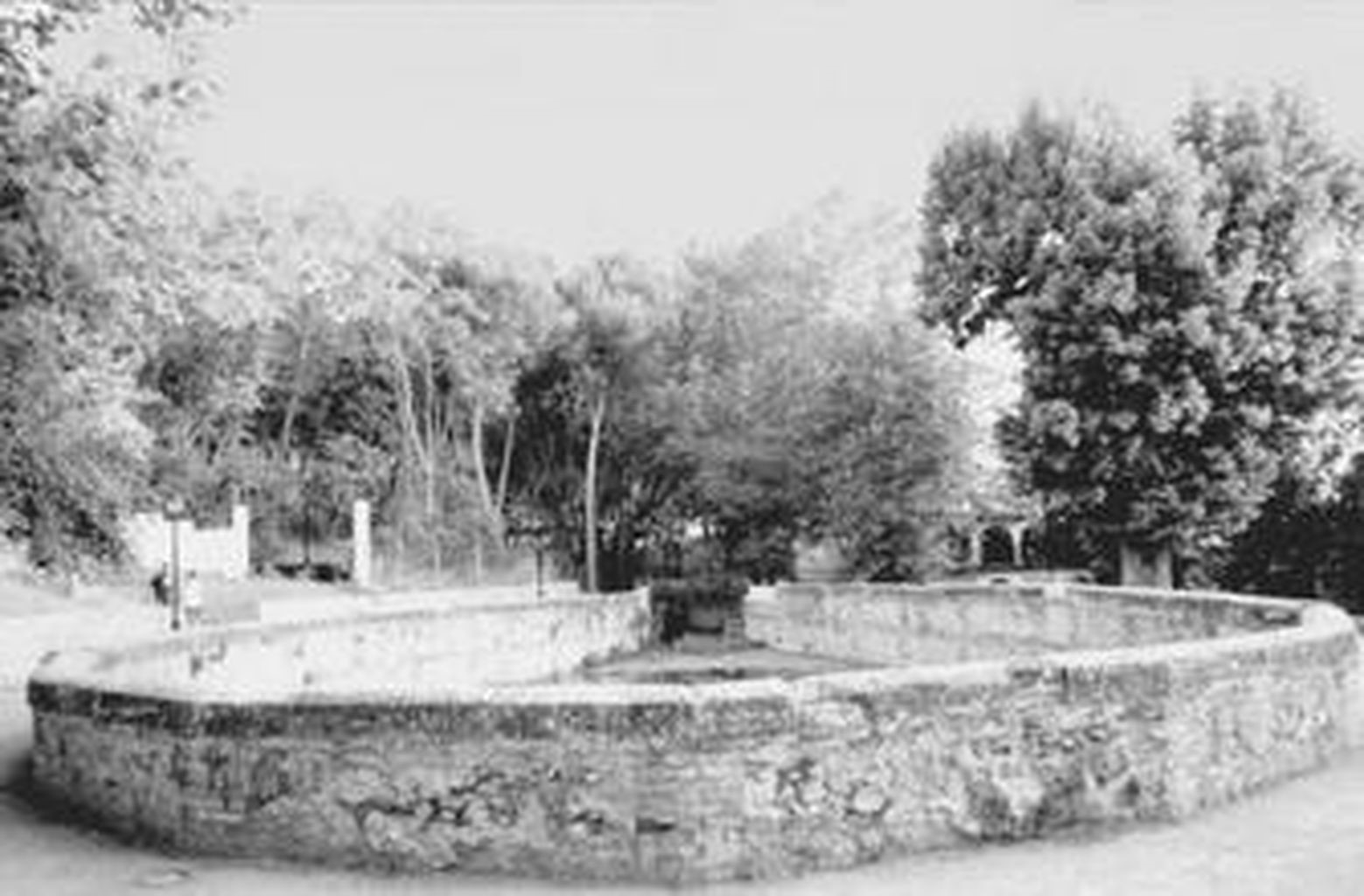
Between Fuente Granada and Víznar the water runs uncovered through the whole area where the terrible events took place after the military uprising of July 1936 and the subsequent nationalist repression. Parts of the irrigation channel preserve the original work.
The Fountain of Tears is the place of reference where the first investigators who came to Granada to clarify the circumstances of the poet’s murder converged.
One of them was Agustín Penón, who arrived in Granada in 1955 and stayed there until the following year when he went to Madrid and then to New York where he maintained constant correspondence with Emilia Llanos, Federico’s friend who provided him with some of the contacts with alleged witnesses of the arrest and murder of the poet. In 1955, Penón stayed in a hotel in Fuente Grande, now non-existent, to avoid the “tremendous pressure I suffer in Granada with dozens of people who meet me in the street and stop for a while to reproach me for not seeing them more often”, a harassment that gives an idea of Penón’s popularity during the months he stayed in Granada to collect documentation for a book he never finished.
The manuscript and the copious documentation traveled with him to New York when he left Spain and remained inside a suitcase, the “Penón suitcase”, until it was given, after his death, to his friend the theater director William Layton. After Layton’s death, the suitcase with the documents ended up in the hands of a friend of both, Marta Osorio (pseudonym with which he signed his children’s stories from the sixties in Madrid), who kept them until she consented to give them to Ian Gibson, who was then preparing his biography on Lorca.
Gibson took advantage of Penón’s material and published a short book, comparing the borrowed material with the investigations. However, it was not until 2000 when Marta Osorio herself published Fear, Forgetfulness and Fantasy, Chronicle of the investigation of Agustín Penón on Federico García Lorca (1955-1956).
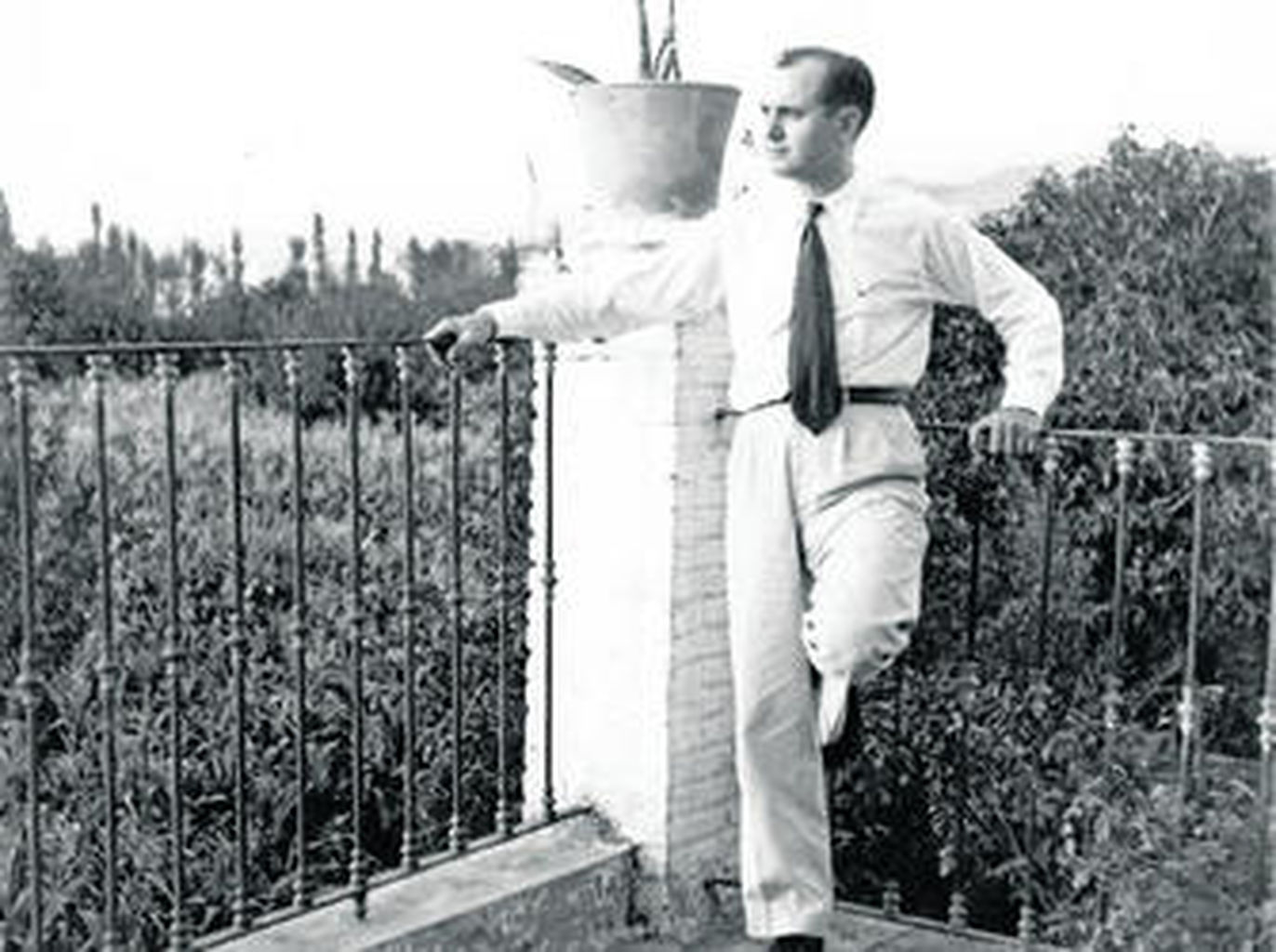
The Fountain of Tears and its surrounding area have been pointed out by different investigators as the probable burial place of García Lorca, although no reliable evidence has been obtained. The Penón himself points out several possible graves in the surroundings, although he regrets the changes in the terrain that made it difficult to determine their precise location in 1955.
Molina Fajardo suggests that Lorca is buried under a post-conciliar and modern church located next to the fountain. “When Federico was killed and buried in this place,” Penón writes, “none of the houses that are now around The Large Fountain existed. It was all countryside, scrubland planted with olive trees surrounding the spring where the water bubbles constantly; the Arabs called it Aynadamar (fountain of tears), on its shore grows a gigantic tree, one of those that are called plane trees here, which spreads a comforting shade (…). If Federico is buried in the pit (…) the prophetic value of one of his poems is impressive given that there are only about twenty meters to the Aynadamar ditch where the water runs: “Mi corazón reposa junto a la fuente fría [My heart rests next to the cold fountain] / (llénalo con tus hilos / araña del olvido…) [(fill it with your threads] / araña del olvido…) [spider of oblivion…)]”. Dream, May 1919. Book of Poems, 1921).
Ay, fuente de las lágrimas,
[oh, source of tears,]
ay, campos de Alfacar, tierras de Víznar.
[oh, Alfacar fields, Víznar lands.]
El viento de la noche,
[The night wind,]
¿por qué os lleva la arena, y no la sangre?
[why does the sand carry you, and not the blood?]
¿por qué entrecorta el agua cual mi llanto?
[Why does the water choke like my crying?]
No le digáis al alba vuestro luto,
[Do not tell him your mourning at dawn,]
no le quebréis al día su esperanza
[do not break his hope]
de nardo y verde sombra;
[of tuberose and green shadow.]
pero en la noche aguda,
[but in the acute night,]
sesgada por el dalle de los vientos
[skewed by the scythe of the winds]
que no olvidan, llorad, llorad conmigo.
[that do not forget, cry, cry with me.]
Llora, tú, fuente grande,
[Cry, you big fountain,]
ay, fuente de las lágrimas.
[oh, fountain of tears.]
Y sed ya para siempre mar salobre,
[And be a brackish sea forever,]
oh campos de Alfacar, tierras de Víznar.
[oh fields of Alfacar, lands of Víznar.]
- Miguel Caballero and Pilar Góngora. The Truth about the Murder of García Lorca. Ibersaf. 2007.
- Agustín Penón. Fear, Forgetfulness and Fantasy. Edited by Marta Osorio. Comares. Granada, 2000.
- Ian Gibson. From New York to Fuente Grande. Grijalbo. Barcelona, 1987.
- Eduardo Molina Fajardo. The Last Days of García Lorca. Plaza y Janés. Barcelona, 1983.
- Lorca´s location
- Aynadamar Spring
- current location
- Fuente Grande de Alfacar
- ADDRESS
- Avenida de la Alfaguara
- DETAILS OF THE VISIT
Public space of free access.
HOW TO GET BY BUS
